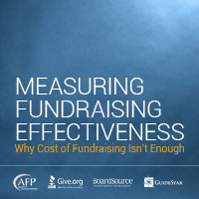 Nonprofit board members are reminded again and again to think of our role in terms of the “three Ts” — offering time, treasure, and talent to the organizations we serve. There is no question that nonprofits and society are well served when boards are ably and enthusiastically fulfilling these core responsibilities to the best of their abilities.
Nonprofit board members are reminded again and again to think of our role in terms of the “three Ts” — offering time, treasure, and talent to the organizations we serve. There is no question that nonprofits and society are well served when boards are ably and enthusiastically fulfilling these core responsibilities to the best of their abilities.
But when it comes to fundraising, boards have another important responsibility, and that’s setting strategy. Before the fundraising emails, before the phone calls and meetings with prospective donors, and before the launch of a new direct mail campaign, boards need to help shape key decisions about the organization’s overarching approach when it comes to development.
Should we prioritize targeting existing donors for larger gifts? Or should we consider a broader campaign to bring in lots of new, smaller donors? Is the cost of that new donor management system worth it? Do we need more staff, or can we continue to rely on volunteers to lead our fundraising? And is that direct mail campaign really a good investment?
Unfortunately, when it comes to weighing in on decisions like these, many board members have little data or information to go on. Across the sector, nonprofits lack frameworks and tools for evaluating fundraising approaches. The result is that many boards and their organizations are operating on hunches and reaching for strategies that we’ve heard worked for someone else (but who really knows?). Carried to an extreme, nonprofits sometimes make fundraising decisions based on widely held misconceptions, like the profitability of large-scale gala events.
 This is why I am so excited about the new resource BoardSource has developed in partnership with the Association of Fundraising Professionals, BBB Wise Giving Alliance, and GuideStar. The Measuring Fundraising Effectiveness framework helps boards and their organizations bring a new, evidence-based approach to conversations about nonprofit finance and fundraising. I was especially intrigued to see how the framework introduces the idea of a “dependency quotient.” This new and deceptively simple measure can facilitate generative board discussions about the potential tradeoffs of raising larger amounts of money from fewer sources versus raising smaller amounts from many.
This is why I am so excited about the new resource BoardSource has developed in partnership with the Association of Fundraising Professionals, BBB Wise Giving Alliance, and GuideStar. The Measuring Fundraising Effectiveness framework helps boards and their organizations bring a new, evidence-based approach to conversations about nonprofit finance and fundraising. I was especially intrigued to see how the framework introduces the idea of a “dependency quotient.” This new and deceptively simple measure can facilitate generative board discussions about the potential tradeoffs of raising larger amounts of money from fewer sources versus raising smaller amounts from many.
In the Haas, Jr. Fund’s work, we have seen that success in nonprofit fundraising comes from creating shared responsibility for development across the board and staff, making a commitment to discipline and continuous improvement, and investing strategically to develop the right systems for your organization. None of this is possible without informed ways to measure effectiveness and return on investment.
Again and again in the Haas, Jr. Fund’s work, we have seen how fundraising is a chronic pain point for our nonprofit partners. We need more tools like the Measuring Fundraising Effectiveness framework to help boards evaluate the potential payoff of various strategies and investments. Kudos to BoardSource for helping board members make sure they are putting their time, treasure, and talent to work for an organization that’s thinking strategically about fundraising for the long haul.

